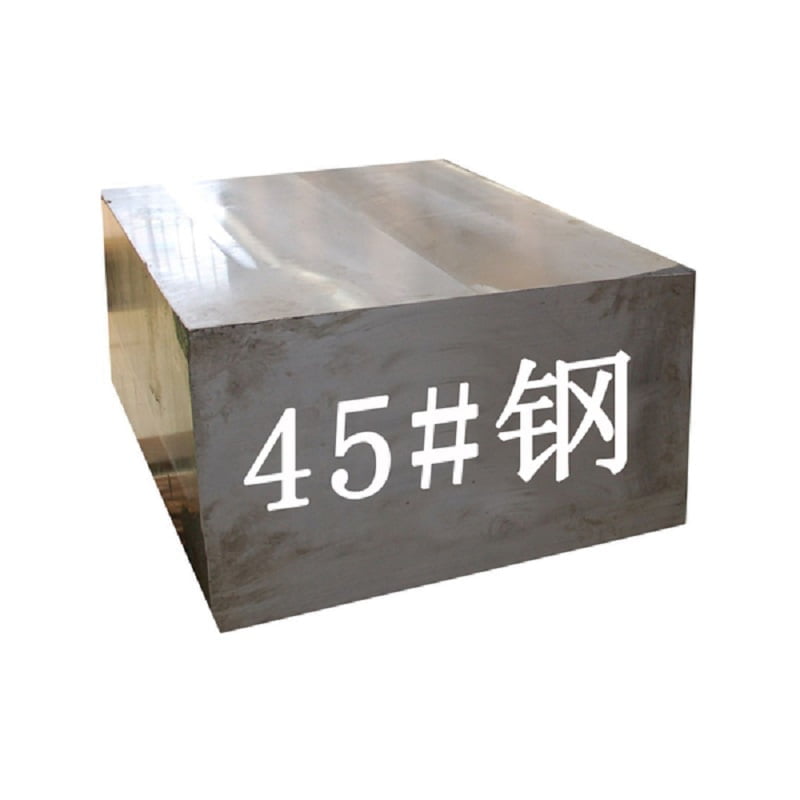
導入
S45C および S55C は、さまざまなエンジニアリングおよび製造用途で一般的に使用される人気のあるグレードの中炭素鋼です。この記事では、表を利用して S45C と S55C の詳細な比較を提供し、それらの化学組成、機械的特性、熱処理応答、用途、および利点/欠点をわかりやすく説明します。
化学組成
鋼グレードの化学組成は、その機械的特性と特定の用途への適合性を決定する上で非常に重要です。
| 要素 | S45C組成(%) | S55C 組成 (%) |
|---|---|---|
| カーボン(C) | 0.42% – 0.48% | 0.50% – 0.60% |
| マンガン(Mn) | 0.60% – 0.90% | 0.60% – 0.90% |
| リン(P) | 0最大.03% | 0最大.03% |
| 硫黄(S) | 0最大.03% | 0最大.03% |
化学成分の説明
- カーボン(C): 主な違いは炭素含有量です。 S45C の炭素含有量は 0.42% ~ 0.48% ですが、S55C の炭素含有量はこれよりわずかに高い 0.50% ~ 0.60% です。 S55C の炭素含有量が増えると、硬度と強度が向上します。
- マンガン(Mn): どちらのグレードにも、鋼の脱酸と焼入れ性の向上に重要な同様の範囲のマンガンが含まれています。
- リン(P)と硫黄(S):これらは鋼中の不純物と考えられます。どちらのグレードも最大許容パーセンテージが同じであり、脆性の軽減に役立ちます。
機械的性質
機械的特性は、さまざまな応力下で材料がどのように機能するかを決定するために重要です。
| 財産 | S45C | S55C |
|---|---|---|
| 降伏強さ(MPa) | 約355MPa | 約400MPa |
| 引張強さ(MPa) | 570~700MPa | 650~800MPa |
| 伸長 (%) | 14% (最低) | 12% (最低) |
| 硬度(HB) | 170~210HB | 190~230HB |
機械的性質の詳しい説明
- 降伏強さ: S55C は S45C よりも降伏強度が高いため、変形する前により大きな応力に耐えることができます。
- 抗張力: S55C の引張強度も S45C の強度を上回っており、大きな荷重がかかる用途により適しています。
- 伸長: 伸びとは、鋼が破断する前に伸びる能力を指します。 S45C はより高い伸びを示し、より多くの塑性変形を受ける可能性があることを示しています。
- 硬度: S55C は一般に S45C よりも硬く、耐摩耗性が向上します。
熱処理の反応
熱処理は炭素鋼の機械的特性に大きな影響を与える可能性があります。
| 熱処理タイプ | S45C | S55C |
|---|---|---|
| 焼入れ | 焼入れ処理により硬化可能 | 焼入れによりさらに高い硬度を実現可能 |
| テンパリング | 強度を維持しながら脆性を軽減します | 硬度を維持しながら靭性を向上させます |
熱処理の説明
- 焼入れ:両材種とも焼入れにより硬度を高めることができますが、S55Cは炭素含有量が多いため、焼入れ後の硬度が高くなる傾向があります。
- テンパリング: 焼入れ後の焼き戻しプロセスにより、靭性が向上し、潜在的な脆性が軽減されます。これは、衝撃荷重に耐えなければならないコンポーネントにとって不可欠です。
アプリケーション
S45CおよびS55Cは、その機械的特性に基づいてさまざまな用途に使用されます。
| 応用 | S45C | S55C |
|---|---|---|
| 歯車 | よく使われる | 高応力ギアに最適 |
| シャフト | よく使われる | 高性能シャフトに採用 |
| 機械部品 | 一般エンジニアリング部品 | より高い強度が必要な部品 |
| ツール | 一般的には使用されません | 切削工具や金型に適用可能 |
| 自動車部品 | よく使われる | 重要な用途 (クランクシャフトなど) |
アプリケーションの説明
- S45C:強度と被削性のバランスが取れており、歯車やシャフトなどの一般工学用途に適しています。
- S55C: 炭素含有量が高いため、切削工具や高性能自動車部品など、より高い強度と硬度が要求される用途に適しています。
長所と短所
S45C と S55C にはどちらも独自の長所と短所があります。
| 側面 | S45C | S55C |
|---|---|---|
| 利点 | – 良好な機械加工性 | – より高い強度と硬度 |
| – 一般的な用途ではコスト効率が高い | – 優れた耐摩耗性 | |
| – バランスのとれた特性 | – 高ストレス環境に適しています | |
| 短所 | – S55Cと比較して強度が低い | – 被削性の低下 |
| – 限られた硬度 | – S45Cと比較してコストが高い |
メリット・デメリットを詳しく解説
- S45Cの利点: 優れた加工性とコスト効率により、さまざまな一般工学用途に適しています。
- S45Cのデメリット: 強度と硬度が低いため、高応力用途では効果が制限される可能性があります。
- S55Cの利点: 強化された強度と耐摩耗性により、要求の厳しい用途に適しています。
- S55Cのデメリット: 硬度が高くなると機械加工が難しくなり、生産コストが上昇する可能性があります。
結論
S45C と S55C のどちらを選択するかについては、アプリケーションの特定の要件を慎重に検討する必要があります。 S45C は強度と機械加工性のバランスが取れているため、一般的なエンジニアリング用途に適しています。一方、S55C は強度と硬度が高いため、応力や摩耗下での性能向上が必要な用途に最適です。化学組成、機械的特性、熱処理反応、および用途の違いを理解することは、エンジニアやメーカーがプロジェクトのニーズに合わせた情報に基づいた材料選択を行うのに役立ちます。
